
6th-7th March 2008
Brunei Gallery Lecture Theater
Jaina Art & Architecture
10th Jaina Studies Workshop at SOAS
The next, and our last day of visit was Saturday. Our flight back was in the evening, and so was Gerd Mevissen’s, he by chance had booked the same. We enjoyed the opportunity to spend more time with him. In Berlin we rarely run into him, as we live rather far apart and both are very busy.
Originally we had planned to visit Samanijis at the JVB London Centre, but unfortunately they still were in India where they had to wait for the result of their English language test for visa. So we unexpectedly had the day at our disposal. We left our luggage at Indian YMCA and headed towards British Museum. It was a rainy and cold morning, ideal weather conditions to spend time in a museum.
In British Museum there was an exhibition, ”The First Emperor – China’s Terracotta Army”, and we specially liked the brilliant colours of the enormous half-relief in one entry hall on this cold and rainy morning!

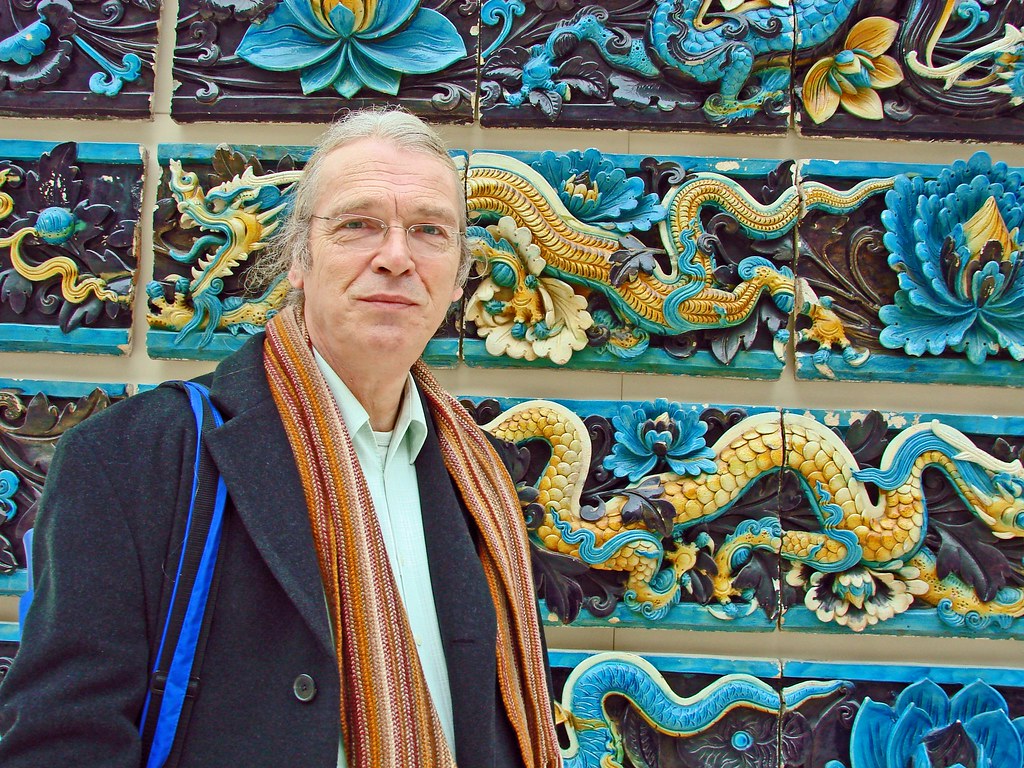
With a bunch of visitors we rambled in the huge museum. Gerd Mevissen took photos of the British Museum’s Jaina exhibit:
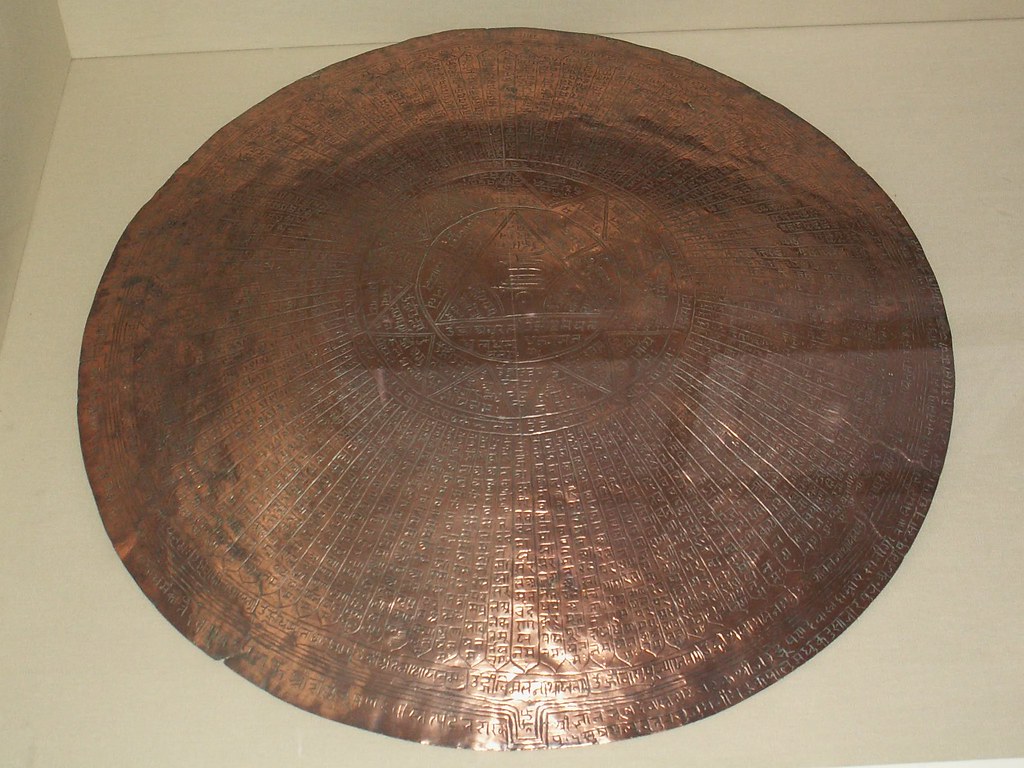 North India, inscribed and dated Samvat 1688 (AD 1631). The supernaturally powerful qualities both of the written and the spoken word have for a long time been accepted features of Indian religion. The inscription on this yantra, with a Jain mantra at the centre, is in devanagari script suggesting a north Indian provenance. [OA 1880.4057]
North India, inscribed and dated Samvat 1688 (AD 1631). The supernaturally powerful qualities both of the written and the spoken word have for a long time been accepted features of Indian religion. The inscription on this yantra, with a Jain mantra at the centre, is in devanagari script suggesting a north Indian provenance. [OA 1880.4057]
Jainyantra
North India, inscribed and dated Samvat 1688 (AD 1631). The supernaturally powerful qualities both of the written and the spoken word have for a long time been accepted features of Indian religion. The inscription on this yantra, with a Jain mantra at the centre, is in devanagari script suggesting a north Indian provenance. [OA 1880.4057]
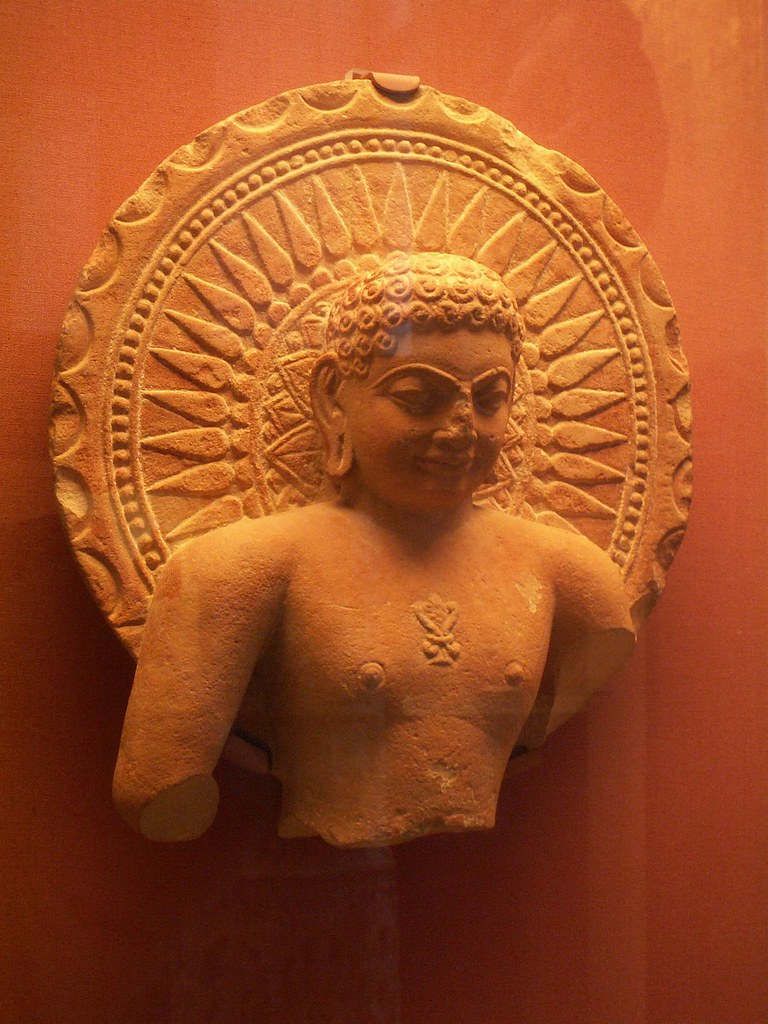 Mathura, 3rd century AD. Although it is impossible to identify which Jain teacher is depicted, it is clear from this red sandstone sculpture that from the early centuries AD broad shoulders and tightly curled hair had become established features of depicting Jain teachers. [Secretary of State for India in Council OA 1901.12-24.5]
Mathura, 3rd century AD. Although it is impossible to identify which Jain teacher is depicted, it is clear from this red sandstone sculpture that from the early centuries AD broad shoulders and tightly curled hair had become established features of depicting Jain teachers. [Secretary of State for India in Council OA 1901.12-24.5]
Jain Tirthankara
Mathura, 3rd century AD. Although it is impossible to identify which Jain teacher is depicted, it is clear from this red sandstone sculpture that from the early centuries AD broad shoulders and tightly curled hair had become established features of depicting Jain teachers. [Secretary of State for India in Council OA 1901.12-24.5]
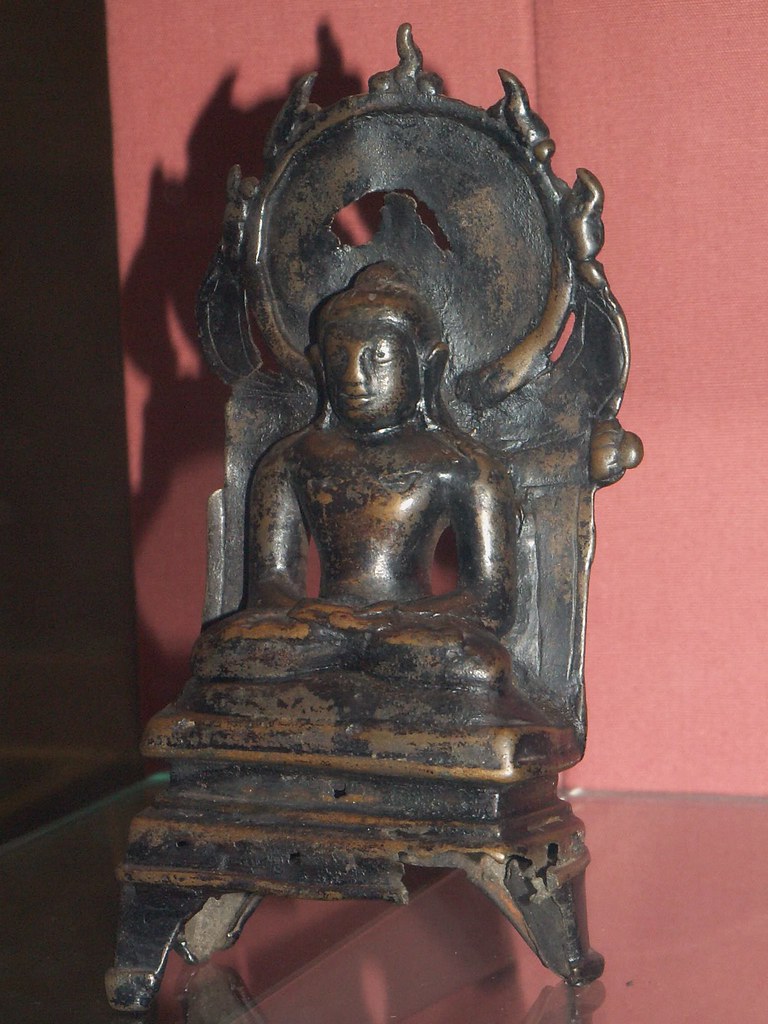 Gujarat, 7th-8th century AD. Jainism has been well-established in Gujarat for many centuries, up to the present day. This bronze image shows the teacher with a flaming halo. [OA 1962.7-22.1]
Gujarat, 7th-8th century AD. Jainism has been well-established in Gujarat for many centuries, up to the present day. This bronze image shows the teacher with a flaming halo. [OA 1962.7-22.1]
Jain Tirthankara
Gujarat, 7th-8th century AD. Jainism has been well-established in Gujarat for many centuries, up to the present day. This bronze image shows the teacher with a flaming halo. [OA 1962.7-22.1]
 Orissa, 11th-12th century AD. The first and the last of the 24 tirthankaras are depicted in this schist sculpture. They are both shown naked, having abandoned all earthly attachments. Orissa was an early and important centre of Jainism. [Bridge Collection OA 1872.7-159]
Orissa, 11th-12th century AD. The first and the last of the 24 tirthankaras are depicted in this schist sculpture. They are both shown naked, having abandoned all earthly attachments. Orissa was an early and important centre of Jainism. [Bridge Collection OA 1872.7-159]
Tirthankaras Rishabhadeva and Mahavira
Orissa, 11th-12th century AD. The first and the last of the 24 tirthankaras are depicted in this schist sculpture. They are both shown naked, having abandoned all earthly attachments. Orissa was an early and important centre of Jainism. [Bridge Collection OA 1872.7-159]
 Deccan, 12th-13th century AD. The jewelled parasol and the tight and decorated scroll are typical features of Deccan sculpture. [Given by the Rev. Flint, executor of Lady Raffles OA 1869.12-28.172]
Deccan, 12th-13th century AD. The jewelled parasol and the tight and decorated scroll are typical features of Deccan sculpture. [Given by the Rev. Flint, executor of Lady Raffles OA 1869.12-28.172]
Standing Tirthankara perhaps Munisuvrata
Deccan, 12th-13th century AD. The jewelled parasol and the tight and decorated scroll are typical features of Deccan sculpture. [Given by the Rev. Flint, executor of Lady Raffles OA 1869.12-28.172]
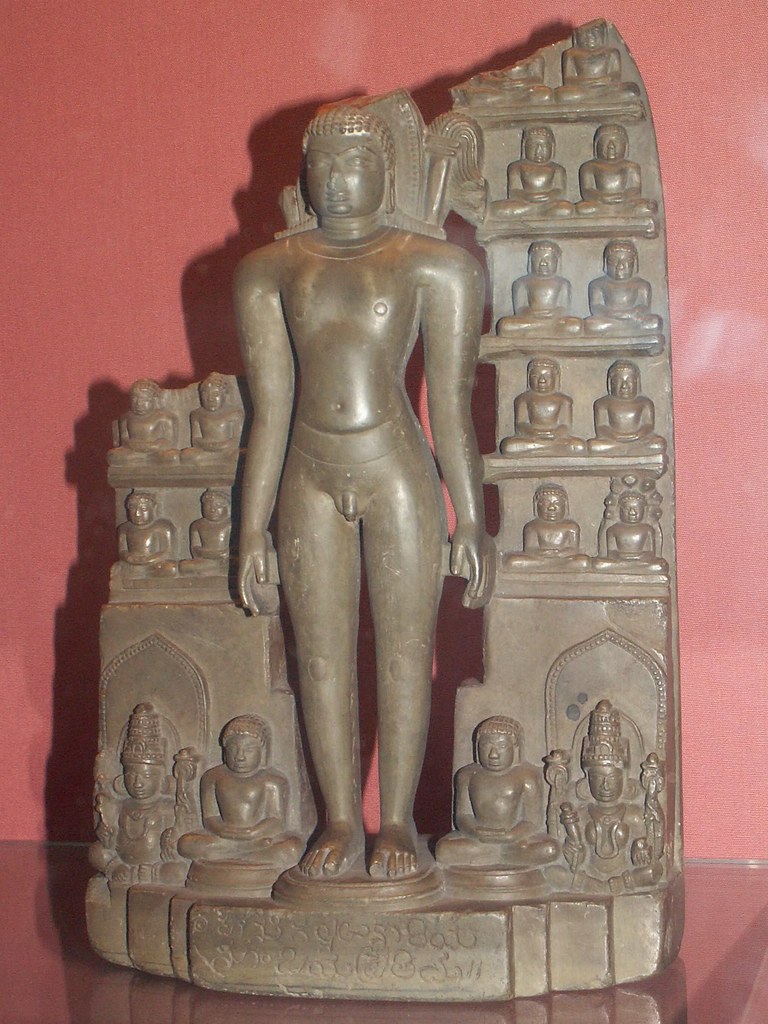 Standing figure of a tirthankara within an architectural surround Southwest Deccan, 13th century AD. The fine grain of the mica schist enhances the beauty of this image surrounded by the other twenty-three 'ford-crossers'. Parshvanatha, the tirthankara prior to Mahavira, is shown at bottom right, with a cobra head-dress. [Henry Oppenheimer, Esq, through the NACF; OA 1914.2-18.1]
Standing figure of a tirthankara within an architectural surround Southwest Deccan, 13th century AD. The fine grain of the mica schist enhances the beauty of this image surrounded by the other twenty-three 'ford-crossers'. Parshvanatha, the tirthankara prior to Mahavira, is shown at bottom right, with a cobra head-dress. [Henry Oppenheimer, Esq, through the NACF; OA 1914.2-18.1]
Standing figure of a Tirthankara
Standing figure of a tirthankara within an architectural surround Southwest Deccan, 13th century AD. The fine grain of the mica schist enhances the beauty of this image surrounded by the other twenty-three 'ford-crossers'. Parshvanatha, the tirthankara prior to Mahavira, is shown at bottom right, with a cobra head-dress. [Henry Oppenheimer, Esq, through the NACF; OA 1914.2-18.1]
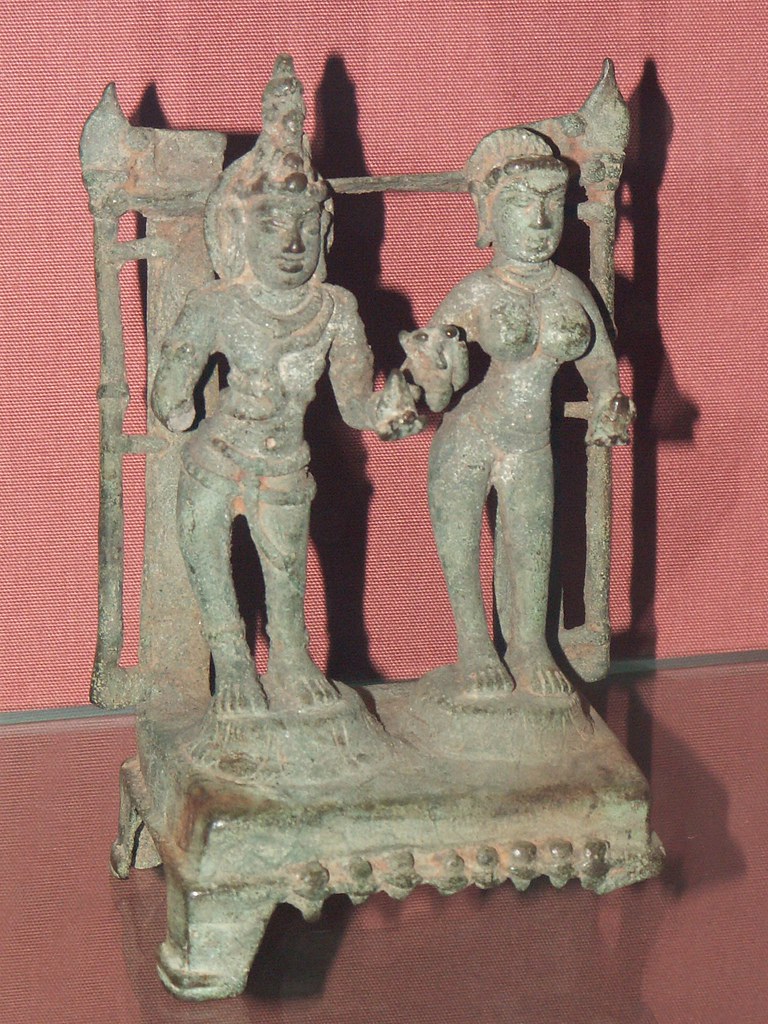 Deccan, 10th century AD. In Jainism, just as in Buddhism, the ancient and auspicious tree spirits, yaksha (male) & yakshi (female), were early included into the divine hierarchy. [Henry Oppenheimer, Esq, through the NACF; OA 1914.2-18.14]
Deccan, 10th century AD. In Jainism, just as in Buddhism, the ancient and auspicious tree spirits, yaksha (male) & yakshi (female), were early included into the divine hierarchy. [Henry Oppenheimer, Esq, through the NACF; OA 1914.2-18.14]
Yaksha and Yakshi
Deccan, 10th century AD. In Jainism, just as in Buddhism, the ancient and auspicious tree spirits, yaksha (male) & yakshi (female), were early included into the divine hierarchy. [Henry Oppenheimer, Esq, through the NACF; OA 1914.2?18.14]
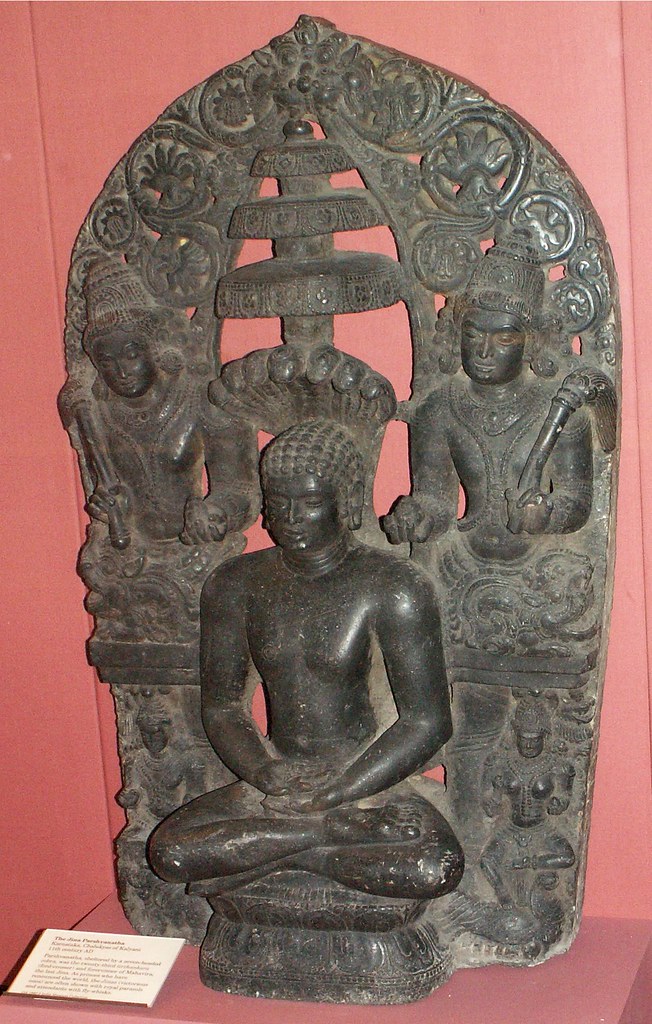 Karnataka, Chalukyas of Kalyani 11th century AD. Parshvanatha, sheltered by a seven-headed cobra, was the twenty-third tirthankara (ford-crosser) and forerunner of Mahavira, the last Jina. As princes who have renounced the world, the Jinas (victorious ones) are often shown with royal parasols and attendants with fly-whisks. [OA 1880.5 India Museum Collection]
Karnataka, Chalukyas of Kalyani 11th century AD. Parshvanatha, sheltered by a seven-headed cobra, was the twenty-third tirthankara (ford-crosser) and forerunner of Mahavira, the last Jina. As princes who have renounced the world, the Jinas (victorious ones) are often shown with royal parasols and attendants with fly-whisks. [OA 1880.5 India Museum Collection]
Jina Parshvanatha
Karnataka, Chalukyas of Kalyani 11th century AD. Parshvanatha, sheltered by a seven-headed cobra, was the twenty-third tirthankara (ford-crosser) and forerunner of Mahavira, the last Jina. As princes who have renounced the world, the Jinas (victorious ones) are often shown with royal parasols and attendants with fly-whisks. [OA 1880.5 India Museum Collection]
 Editor Aparigraha Jain
Editor Aparigraha Jain
 Editor Carla Geerdes
Editor Carla Geerdes